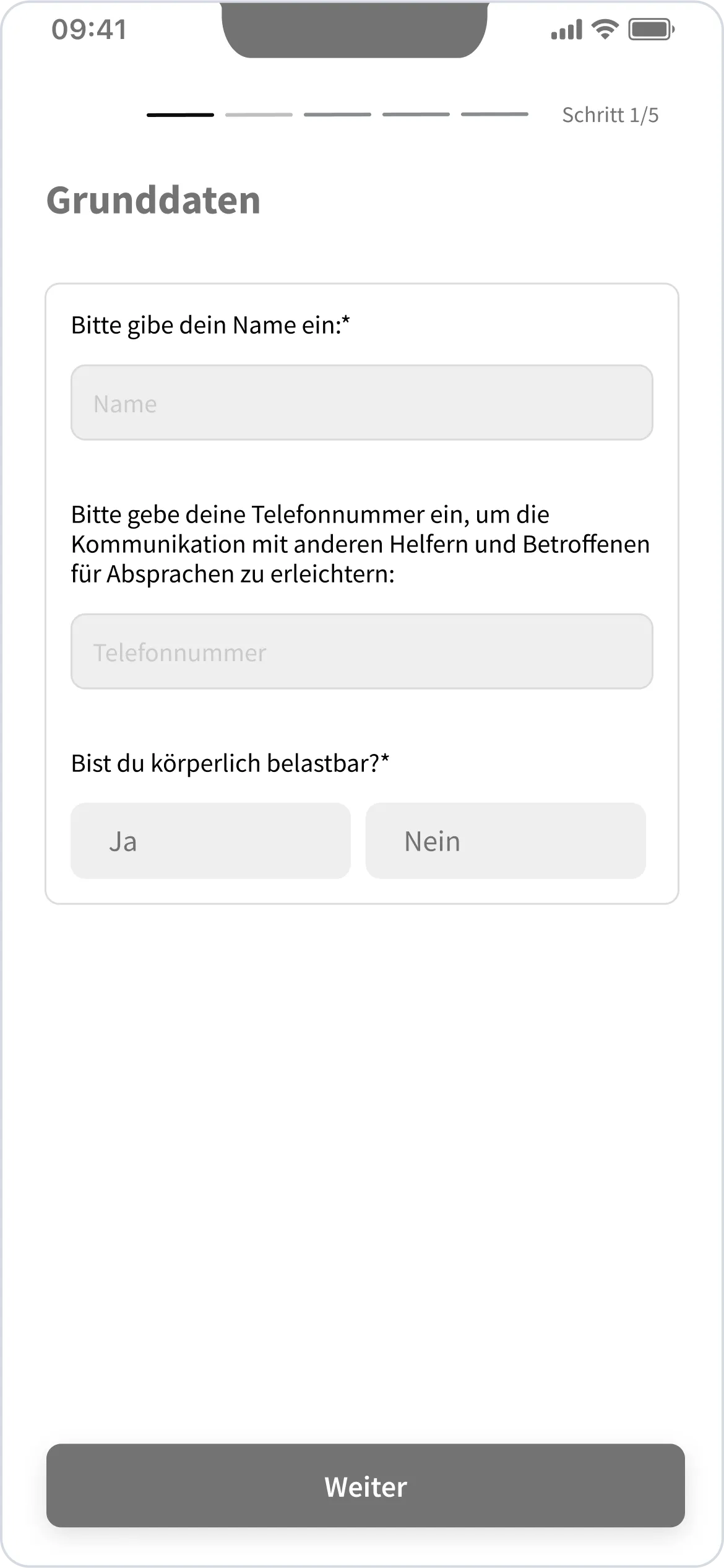Thank you!
© André Jacoby 2024









iterative
Onboarding (at home)
Choosing Tasks
Procurement of tools
Realisation of the task



Onboarding


Homescreen and task-overview


Tools and group overview



Request of tools and Chats


Infopoint terminal

Task instructions
personal qr-code
volunteer name, contact data infopoint
participating helpers
Task and victims contact data
printed task-sheet (A4)







